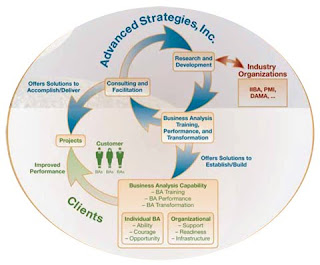
Source http://www.bizreviews.info
Each year technology advances at break neck speeds. These advances are utilized by businesses all across the globe. Multi-million dollar corporations are caught in a “keeping up with the Jones” race to develop new products or better ways of serving the consumer. At times, the bottom line starts to fall. When the trend starts to become a normal thing, there is a problem. This is when a company may need to step back and regroup. Even then, trying the same old thing just does not produce the desired results. A business analyst can come in and trouble shoot the issues.
A certified business analyst is trained to recognize problems and come up with solutions. He or she can listen to what the management is saying and turn it into facts and figures which can be incorporated into a project program. Listening is one of the best attributes a business analyst can have.
When the professional business analyst listens, he or she will hear what is being said. They will also hear what is being implied. The management may know what the problem is, just not how to fix it in a timely manner. Listening to all parties involved will give the analyst a broader scope of the problem. This may mean meeting with IT and other employees. Listening to lower level teams may lead to discoveries no-one knew existed.
The business analyst is removed from the situation, an outsider looking in. This does not mean the analyst has to be an outsider. He or she can be in the organization already. It is just that they can look at the project objectively and determine what is a waste of time and what is not. A different perspective is always a fresh start to any program. It is important to not follow in the same path. It did not work the first time, why would it work this time?
It is important to bring in someone who has a creative side. Someone with good people skills can manage a group of people to motivate them into action. A good business analyst will do this very thing. Acting as a liaison between different teams and departments, the business analyst can keep each unit informed of what is happening. He or she can delegate duties while explaining what must be done and why. He or she may allow freedom of expression and allow someone to generate fantastic ideas which may have been tossed aside in the past.
It can become frustrating to implement a plan of action only to discover when it is put into affect, it is no longer a viable solution. The business analyst will not allow this to happen. He or she is looking at the end goal and keeping up with changes which may affect the outcome. The perfect business analyst is abreast of what is needed and what is wanted. He or she can use this information to develop a flexible plan. Instead of a plan “B”, the plan “A” will be structured to allow for change or new needs.
The reason it is important to have a business analyst is because businesses need “what if” people. They are the ones who determine if a market changes how to incorporate new ways to target it. The business analyst knows if a new technology is on the market, and how it may help the company. Looking at a “what if” situation, the business analyst can determine what will or will not work. The professional business analyst can put a floundering company back on top.
source www.youtube.com

